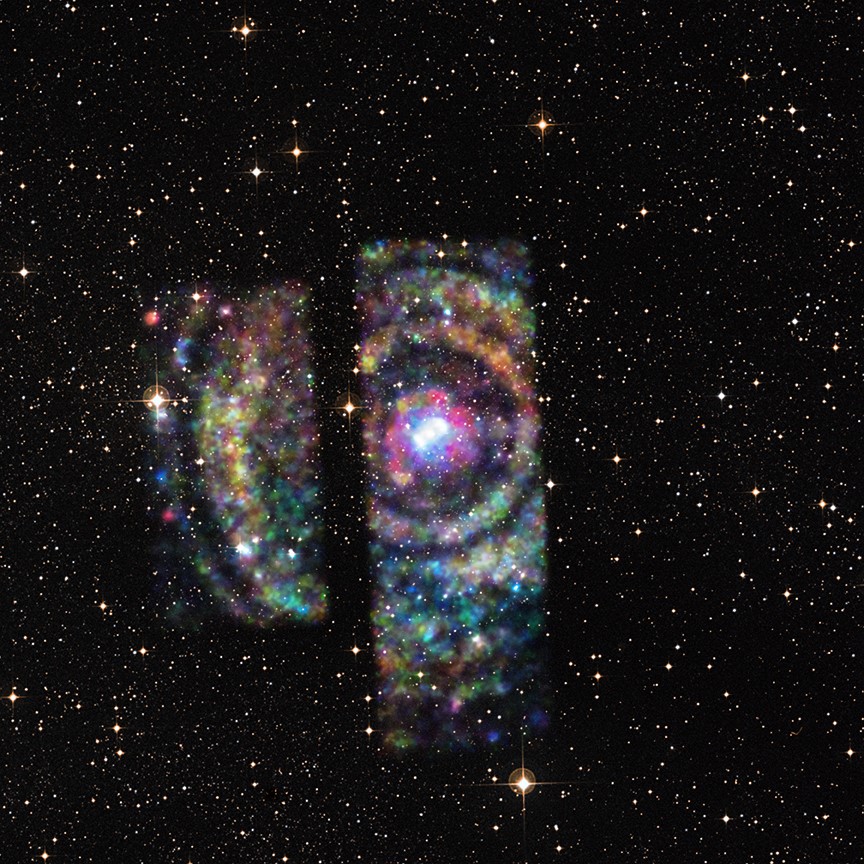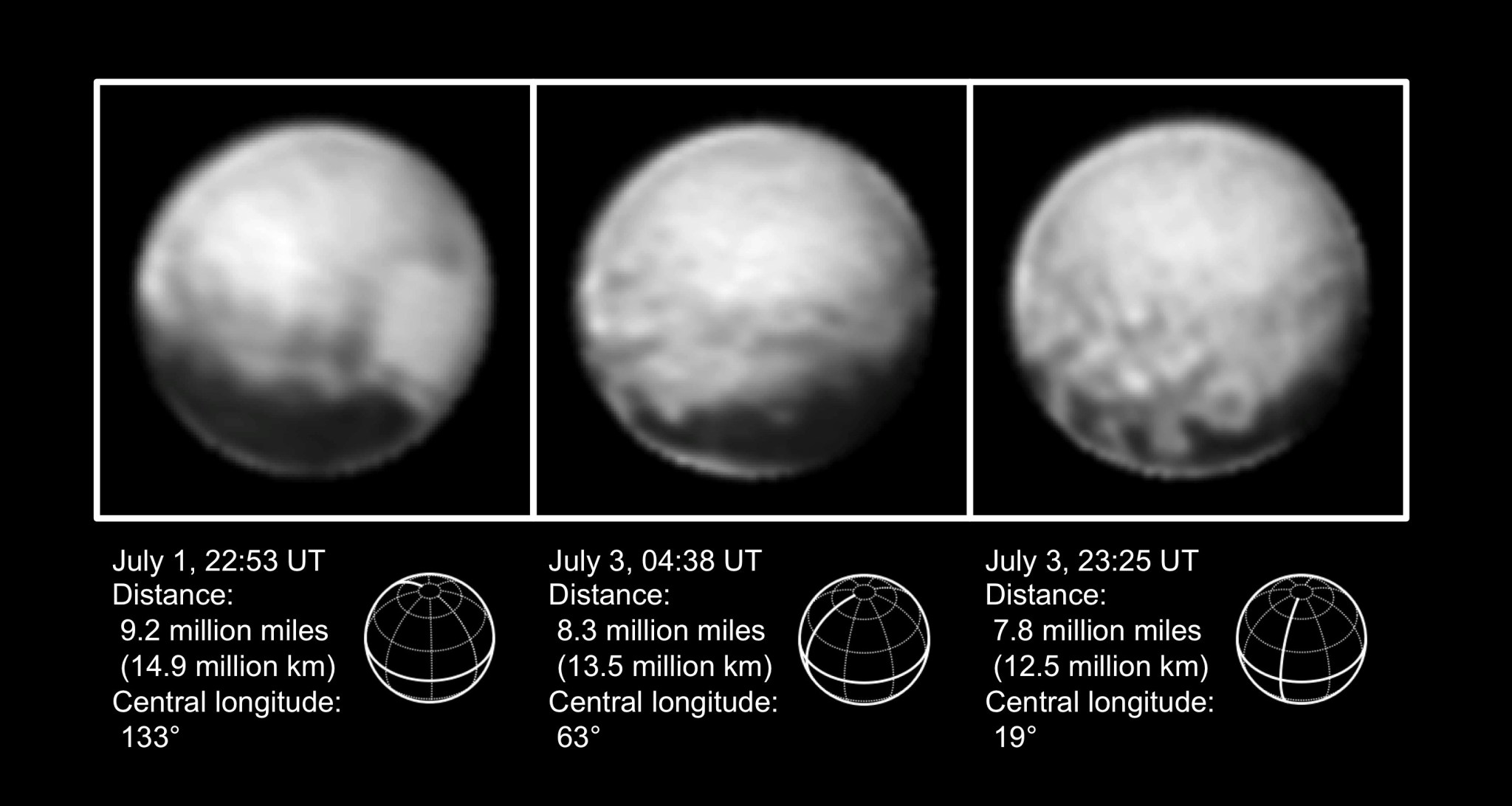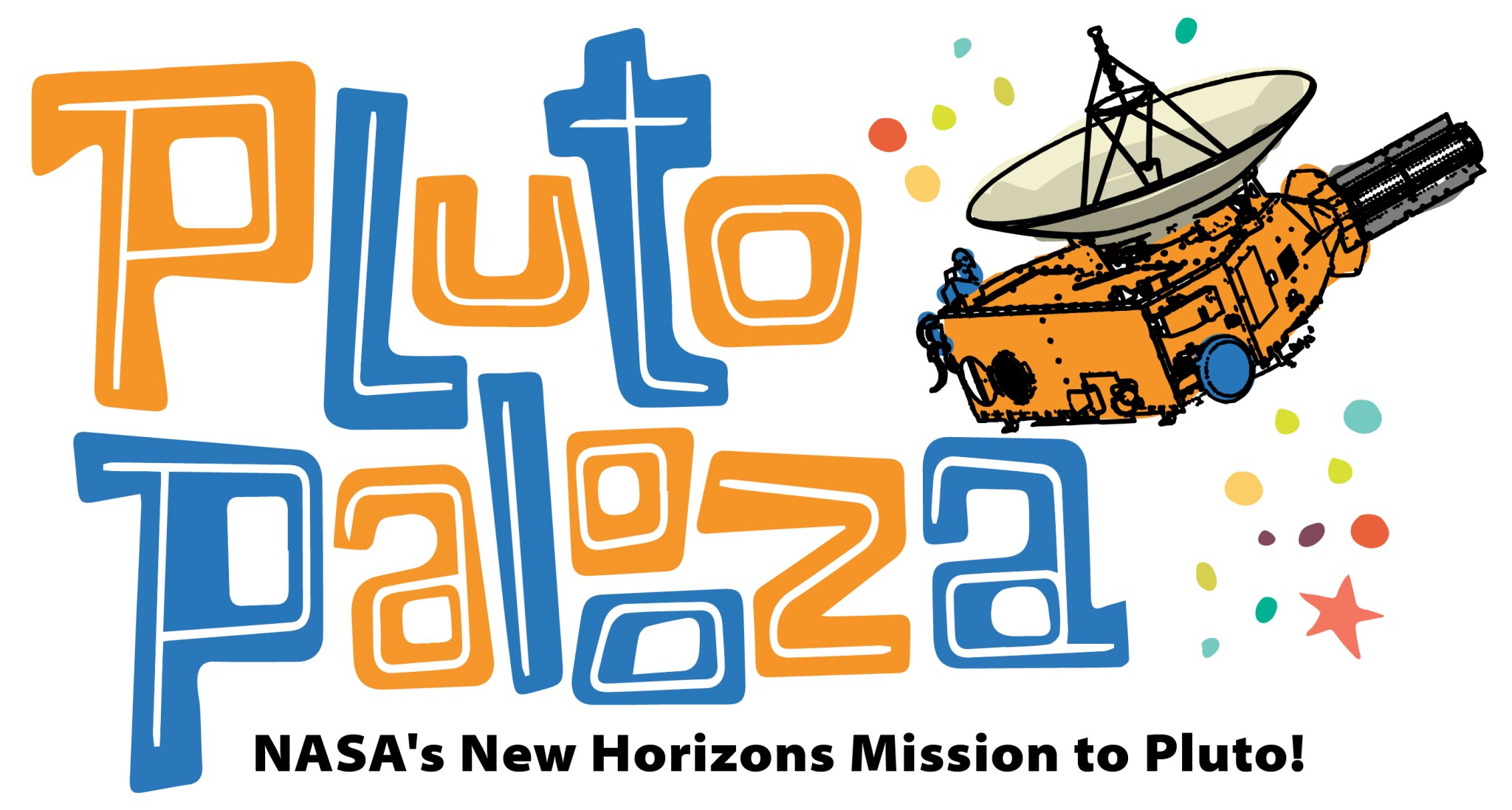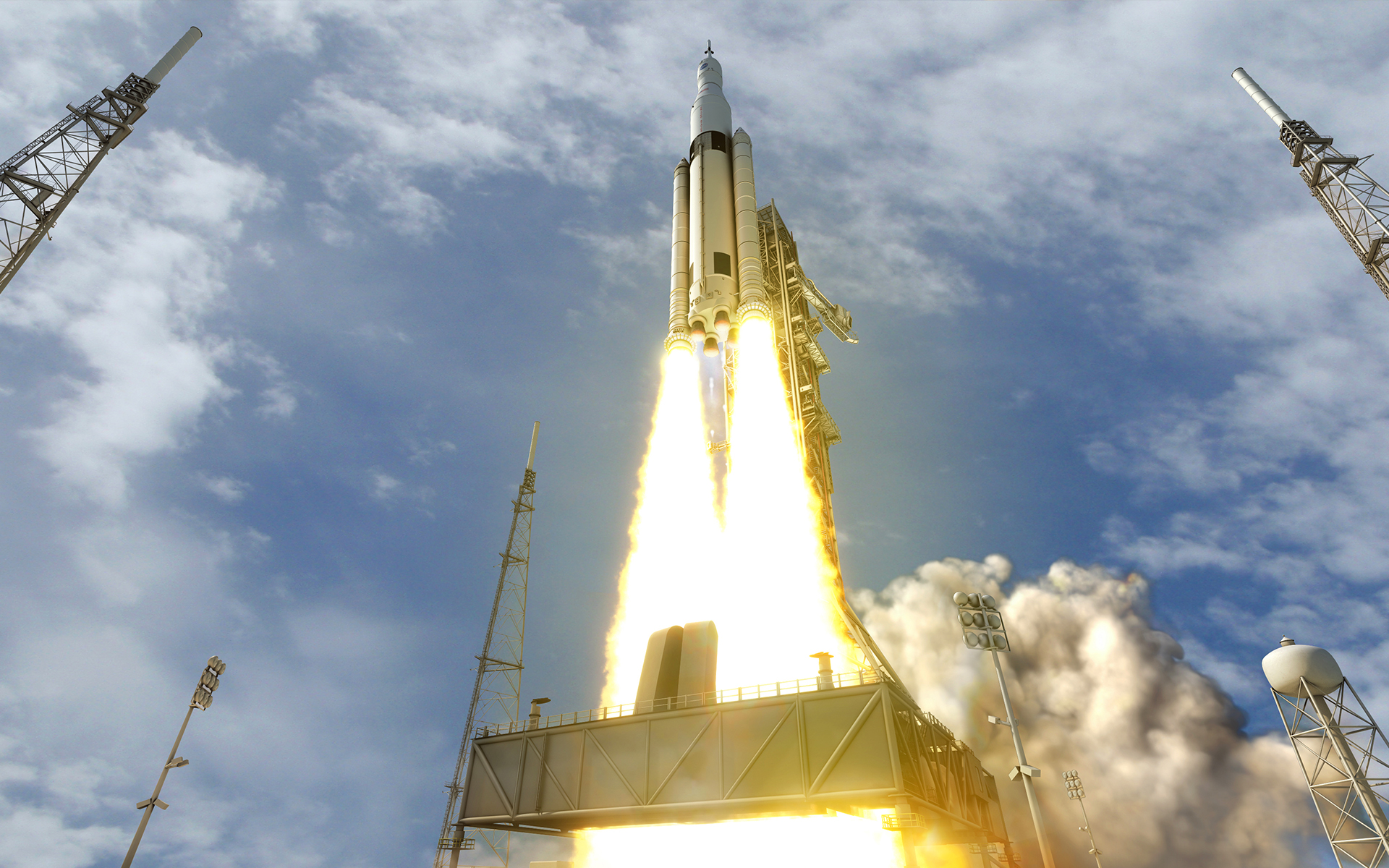In This Week’s Star
- NASA Releases Latest Images of Pluto from New Horizons Ahead of Flyby
- Marshall Team Invited to ‘Plutopalooza’ at Space & Rocket Center July 14
- Welcome to the SLS Blog, ‘Rocketology’
- Blade Dynamics Unveils Largest Blade Manufactured in North America
- NASA’s Chandra Captures X-ray Echoes Pinpointing Distant Neutron Star
- ‘All Clear’ Signal for New Horizons Spacecraft Featured on ‘This Week @NASA’
- Original Von Braun Team Member Oscar Holderer Dies
NASA Releases Latest Images of Pluto from New Horizons Ahead of Flyby
More than nine years after launch, NASA’s New Horizons spacecraft is quickly drawing near to Pluto for its closest approach July 14 at 6:49:57 a.m. Launched in 2006, New Horizons has traveled more than 3 billion miles for the flyby — in which it will skim the surface 8,000 miles above the icy terrain. From this vantage point, New Horizons is expected to provide the first detailed and close-up images of Pluto.
On July 6, eight days before the closest approach, NASA released three high-resolution images of Pluto. The Long Range Reconnaissance Imager obtained the images between July 1 and 3, prior to the July 4 anomaly that sent New Horizons into safe mode.
The three images show the full extent of a continuous swath of dark terrain that wraps around much of Pluto’s equatorial region. The western end of the swath, right, breaks up into a series of striking dark regularly spaced spots, each hundreds of miles in size, which were first detected in New Horizons images taken in late June.
Intriguing details are beginning to emerge in the bright material north of the dark region, in particular a series of bright and dark patches that are conspicuous just below the center of the disk in the right image.
In all three views, the apparent jagged bottom edge of Pluto is the result of image processing. The inset shows Pluto’s orientation, illustrating its north pole, equator and central meridian running from pole to pole.
Johns Hopkins University Applied Physics Laboratory designed, built and operates the New Horizons spacecraft, and manages the mission for NASA’s Science Mission Directorate. The Southwest Research Institute leads the science team, payload operations and encounter science planning. New Horizons is part of the New Frontiers Program managed by NASA’s Marshall Space Flight Center.
To view images from New Horizons and learn more about the mission, visit NASA’s New Horizons webpage.
Marshall Team Invited to ‘Plutopalooza’ at Space & Rocket Center July 14
The U.S. Space & Rocket Center in Huntsville will host “Plutopalooza” — a nationwide celebration of activities and presentations to educate and inform the public about the New Horizons mission’s science objectives and its dramatic flyby of the dwarf planet Pluto. The event, scheduled July 14 from 10 a.m. to 5 p.m., will include hands-on activities, multimedia shows inside the GeoDome planetarium, space story time, and a virtual reality solar system tour — all sharing the excitement of the first spacecraft to visit distant Pluto.
Marshall’s Academic Affairs Office will provide educational materials and activities, and Marshall’s Planetary Missions Program Office will conduct presentations explaining the importance of solar system exploration. Visitors can also get a firsthand look at what a flyby mission is and can create souvenir dwarf planets and model New Horizons spacecraft.
Launched in 2006, New Horizons has traveled for almost 10 years and 3 billion miles. Its nearest approach to Pluto occurs at 6:49:57 a.m. CDT July 14, as the spacecraft skims the surface 8,000 miles above the icy terrain, traveling about 31,000 miles per hour. From this vantage point, New Horizons is expected to provide the first detailed and close-up images of Pluto.
Throughout this week and next, several live broadcasts are scheduled on NASA Television to share content and promote the flyby, including live viewing opportunities from the USSRC during Plutopalooza. Events can be viewed online on the NASA TV webpage.
- July 8-12 9:30 a.m. Daily Live Mission Updates
- July 13 9 a.m. Live Media Briefing
- July 14 6:30 a.m. Live “Closest Approach” Event
- July 14 7-8 a.m. Live Media Briefing
Welcome to the SLS Blog, ‘Rocketology’
NASA has begun the journey to Mars with the Space Launch System — and its story is being told in a new blog called “Rocketology.”
Rocketology will talk about the SLS rocket before it reaches the launch pad – a rare, once-in-a-generation, behind-the-scenes look at how NASA designs, builds and tests a massive launch vehicle like none other in the world. The blog also will pull back the curtain on the real-world rocket science – and rocket scientists – that will make possible the first human footsteps on another planet.
Follow the blog here. Comments and questions will be addressed on the SLS Facebook page.
Blade Dynamics Unveils Largest Blade Manufactured in North America
NASA’s Chandra Captures X-ray Echoes Pinpointing Distant Neutron Star

Astronomers using NASA’s Chandra X-ray Observatory have discovered the largest and brightest set of rings from X-ray light echoes ever observed. These extraordinary rings, produced by an intense flare from a neutron star, provide astronomers a rare chance to determine how far across the Milky Way galaxy the star is from Earth.
The rings appear as circles around Circinus X-1, a double star system in the plane of our galaxy containing a neutron star, the dense remnant of a massive star pulverized in a supernova explosion. The neutron star is in orbit with another massive star, and is shrouded by thick clouds of interstellar gas and dust. Circinus X-1 is also the source of a surprisingly powerful jet of high-energy particles.
“It’s really hard to get accurate distance measurements in astronomy and we only have a handful of methods,” said Sebastian Heinz of the University of Wisconsin in Madison, who led the study. “But just as bats use sonar to triangulate their location, we can use the X-rays from Circinus X-1 to figure out exactly where it is.”
The light echo shows that Circinus X-1 is located about 30,700 light years from Earth, and settles the difference in results published in prior studies. The detection and characterization of the rings required the unique capabilities of Chandra — the ability to detect fine details combined with sensitivity to faint signals.
Researchers determined that the rings are echoes from a burst of X-rays emitted by Circinus X-1 in late 2013. The burst reflected off intervening clouds of dust, with some reflected X-rays arriving to Earth from different angles at a time delay of about one to three months, creating the observed rings.
By comparing the Chandra data to prior images of dust clouds detected by the Mopra radio telescope in Australia, the researchers determined that each ring was created by the X-ray reflections off a different dust cloud. The radio data provides the distance to the different clouds and the X-ray echo determines the location of Circinus X-1 relative to the clouds. An analysis of the rings with the combined radio data allows researchers to use simple geometry to accurately determine the distance of Circinus X-1 from Earth.
“We like to call this system the ‘Lord of the Rings,’ but this one has nothing to do with Sauron,” said co-author Michael Burton of the University of New South Wales in Sydney, Australia. “The beautiful match between the Chandra X-ray rings and the Mopra radio images of the different clouds is really a first in astronomy.”
This new distance estimate means that Circinus X-1 is inherently much brighter in X-rays and other types of light than some scientists previously thought, and indicates that the star system has repeatedly passed a key threshold for brightness where the outward pressure from radiation by the system is balanced by the inward pull of gravity. This behavior is something astronomers generally see more often in systems containing black holes than in systems like Circinus X-1 that contain a neutron star.
The researchers also determined that the speed of the jet of high-energy particles produced by the system is at least 99.9 percent of the speed of light. This extreme velocity is usually associated with jets produced by a black hole.
“Circinus X-1 acts in some ways like a neutron star and in some like a black hole,” said co-author Catherine Braiding, also of the University of New South Wales. “It’s extremely unusual to find an object that has such a blend of these properties.”
Circinus X-1 is thought to have originally become an X-ray source about 2,500 years ago, as seen from Earth. This makes Circinus X-1 the youngest so-called X-ray binary known. The new Chandra data allows astronomers to make a detailed three-dimensional map of the dust clouds between Circinus X-1 and Earth, providing a valuable probe of the structure of the galaxy.
These results have been published in The Astrophysical Journal and are available online. NASA’s Marshall Space Flight Center manages the Chandra program for the agency’s Science Mission Directorate. The Smithsonian Astrophysical Observatory, controls Chandra’s science and flight operations.
For more Chandra images, multimedia and related materials, click here.
For an interactive image, podcast, and video about these findings, click here.
‘All Clear’ Signal for New Horizons Spacecraft Featured on ‘This Week @NASA’
The announcement of an “all clear” for NASA’s New Horizons spacecraft was featured in the latest edition of “This Week @NASA,” a weekly video program broadcast nationwide on NASA-TV and posted online.
With the announcement, the spacecraft will remain on its original course, speeding for a historic July 14 flyby of the dwarf planet Pluto and its moons. Alternative trajectories were prepared, had the New Horizons team observed objects in the flight path. However, after seven weeks of detailed searches for dust clouds, rings and other potential hazards, the team decided to remain on the original path through the Pluto system. This avoids the need for a late course correction to detour around any orbiting debris that could threaten the spacecraft. Because New Horizons is traveling at such a high rate of speed — 30,800 miles per hour — an impact from a particle as small as a grain of rice could be devastating.
The Johns Hopkins University Applied Physics Laboratory designed, built and operates the spacecraft. The Southwest Research Institute, based in San Antonio, leads the science team, payload operations and science planning. New Horizons is part of NASA’s New Frontiers program and is managed by NASA’s Marshall Space Flight Center.
View this and previous episodes at “This Week @NASA” or NASA TV’s YouTube page.
Original Von Braun Team Member Oscar Holderer Dies
NASA’s Marshall Space Flight Center retiree Oscar Holderer died May 5. He was a member of Dr. Wernher von Braun’s original team of 120 engineers and scientists who came to the United States from Germany as part of Operation Paperclip in 1945.
Holderer was born in Preum, Germany. At Marshall he served as a mechanical engineer, designer, fabricator and photographer. One of his major achievements involved designing and overseeing the construction of the tri-sonic wind tunnel used in the development of the Saturn rocket that carried men to the moon.
He held 19 patents as a result of his work and innovations. Holderer retired from NASA in 1974.






























